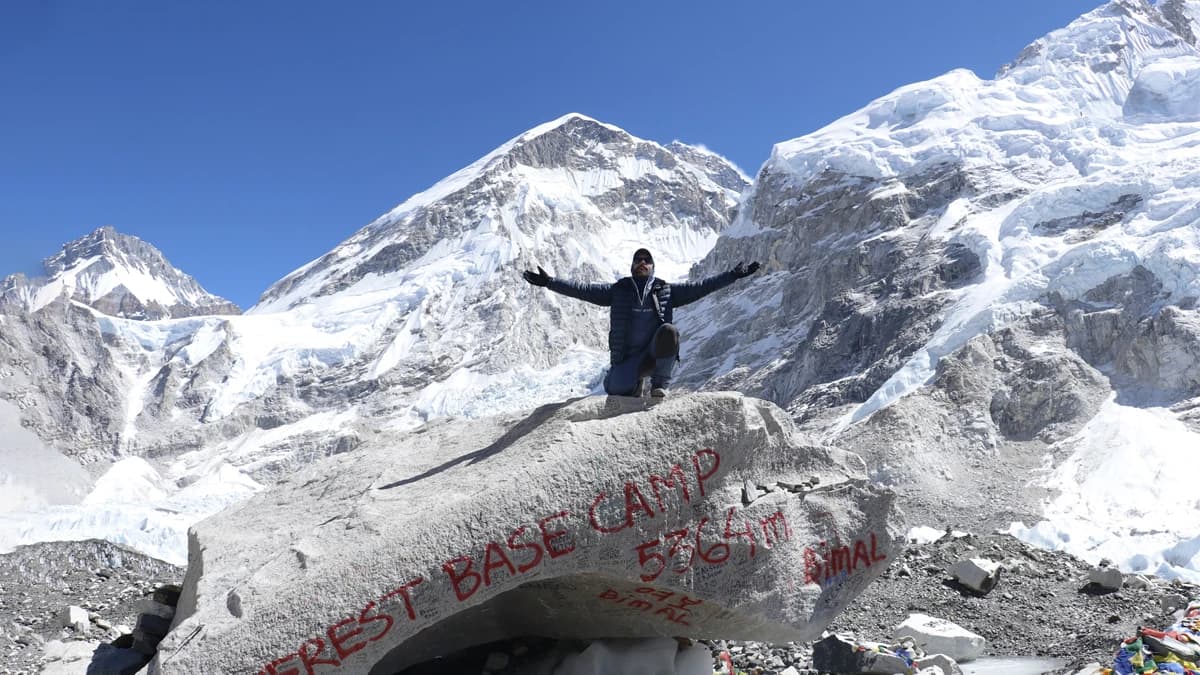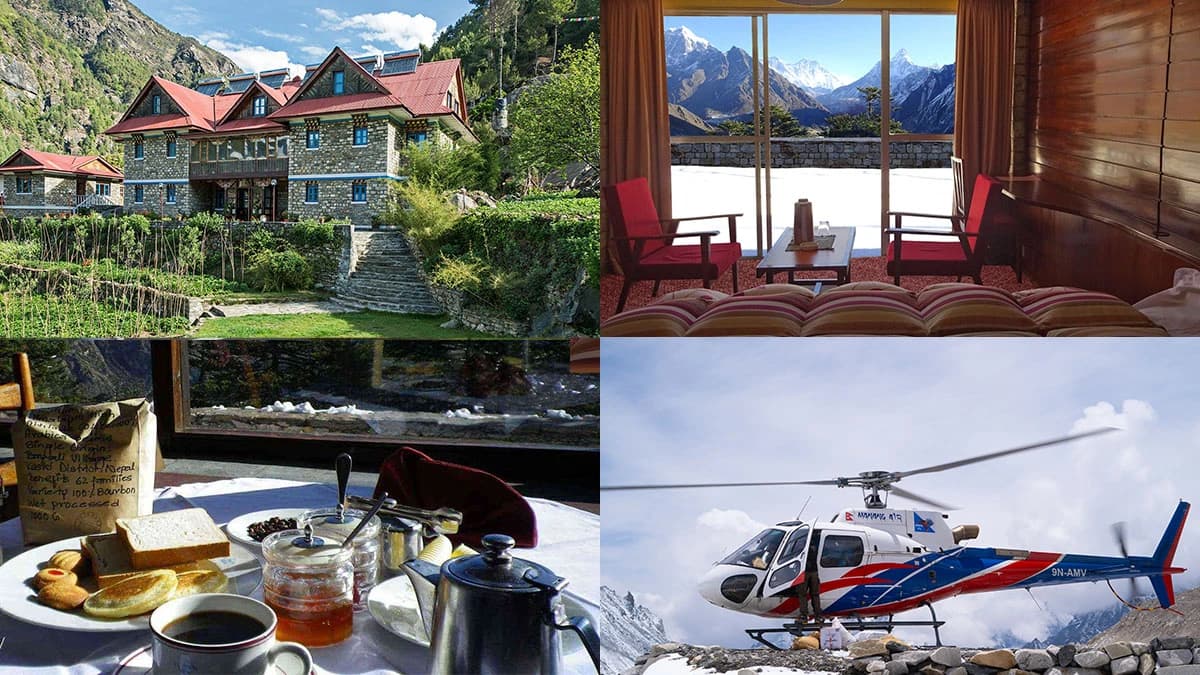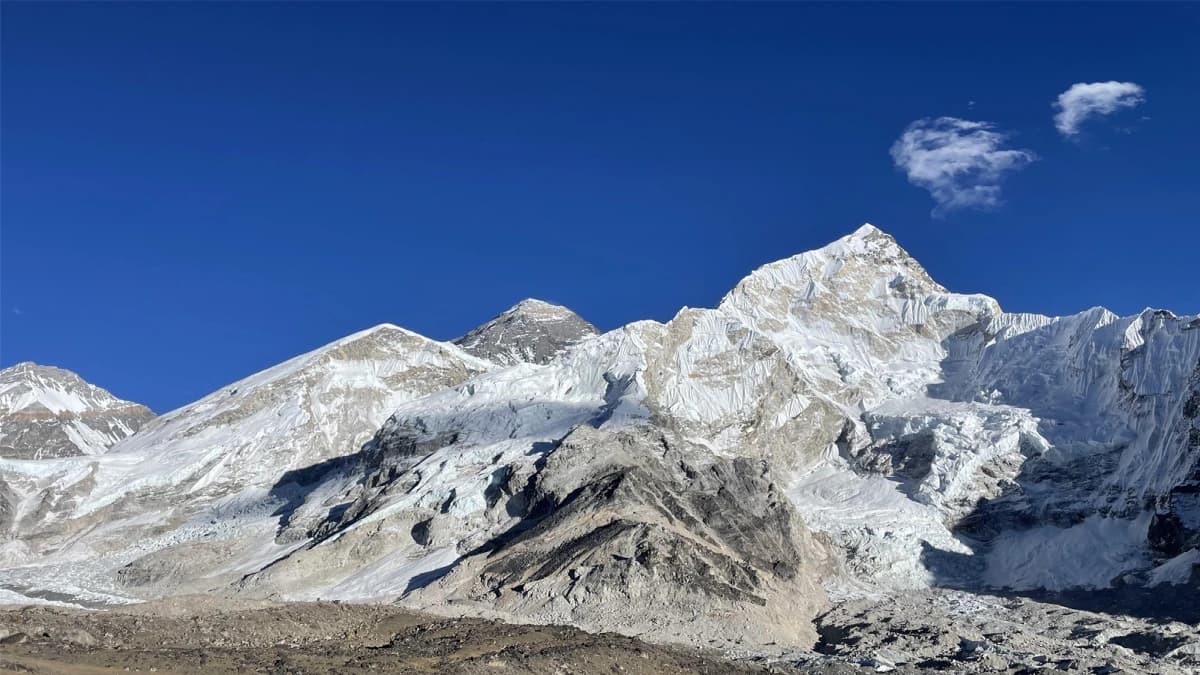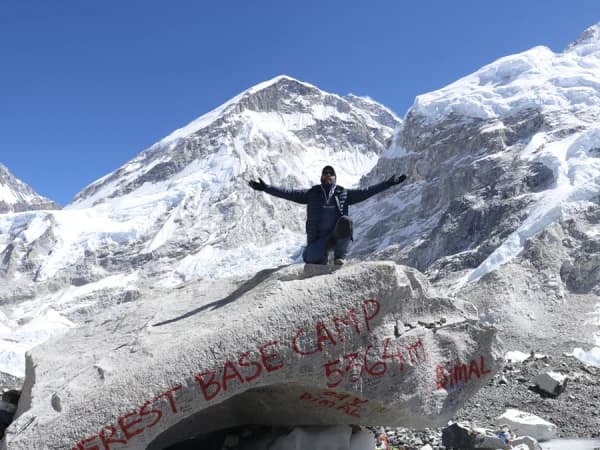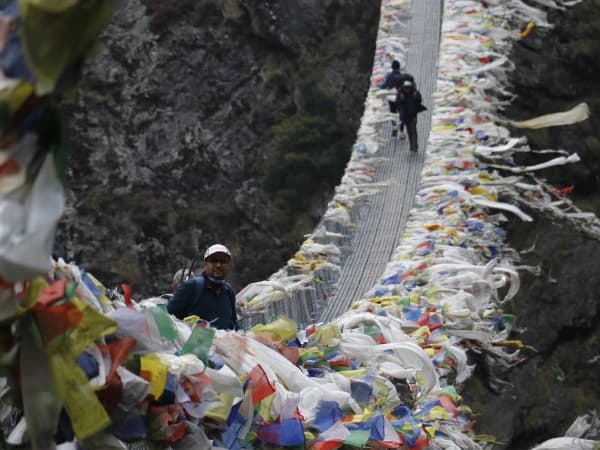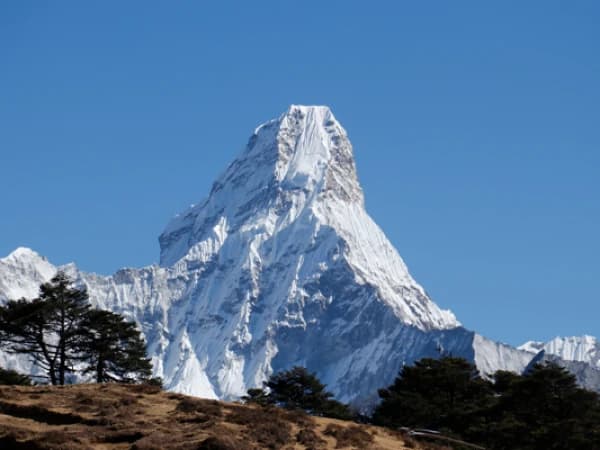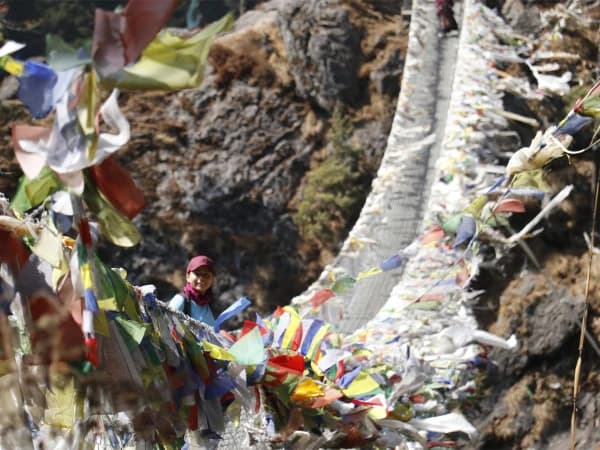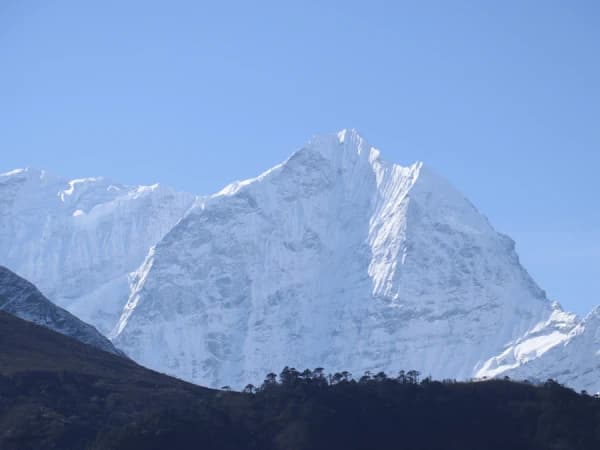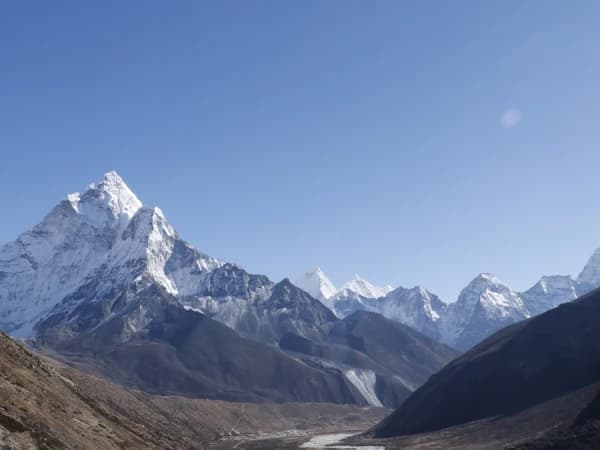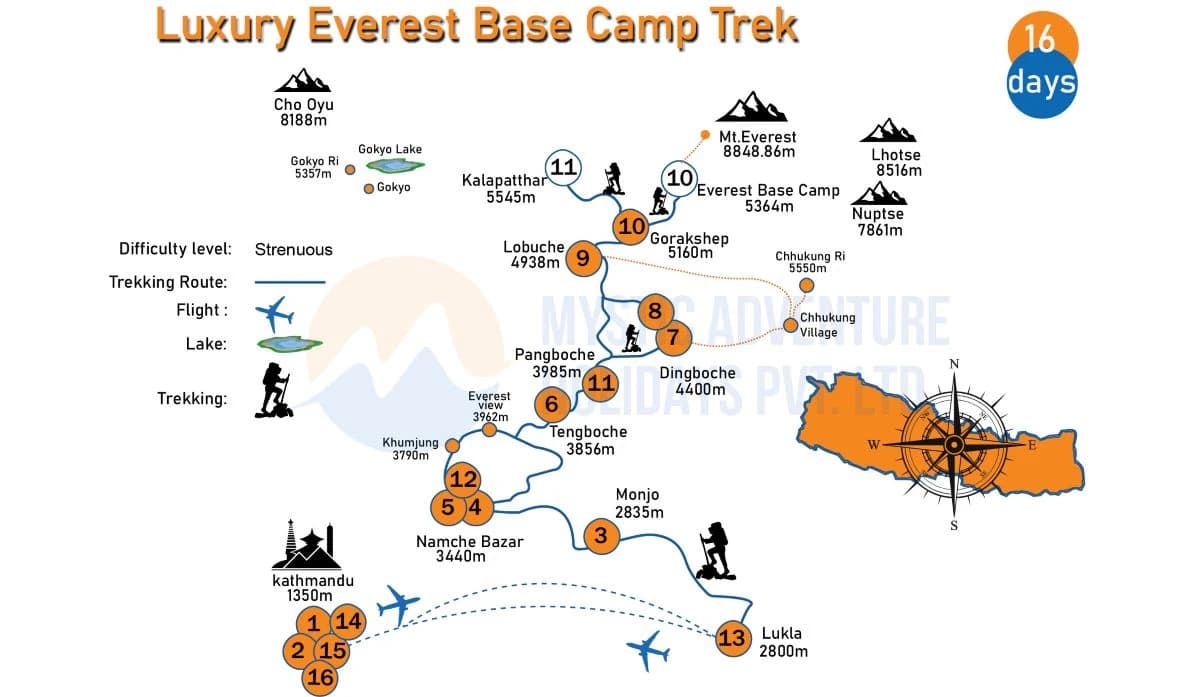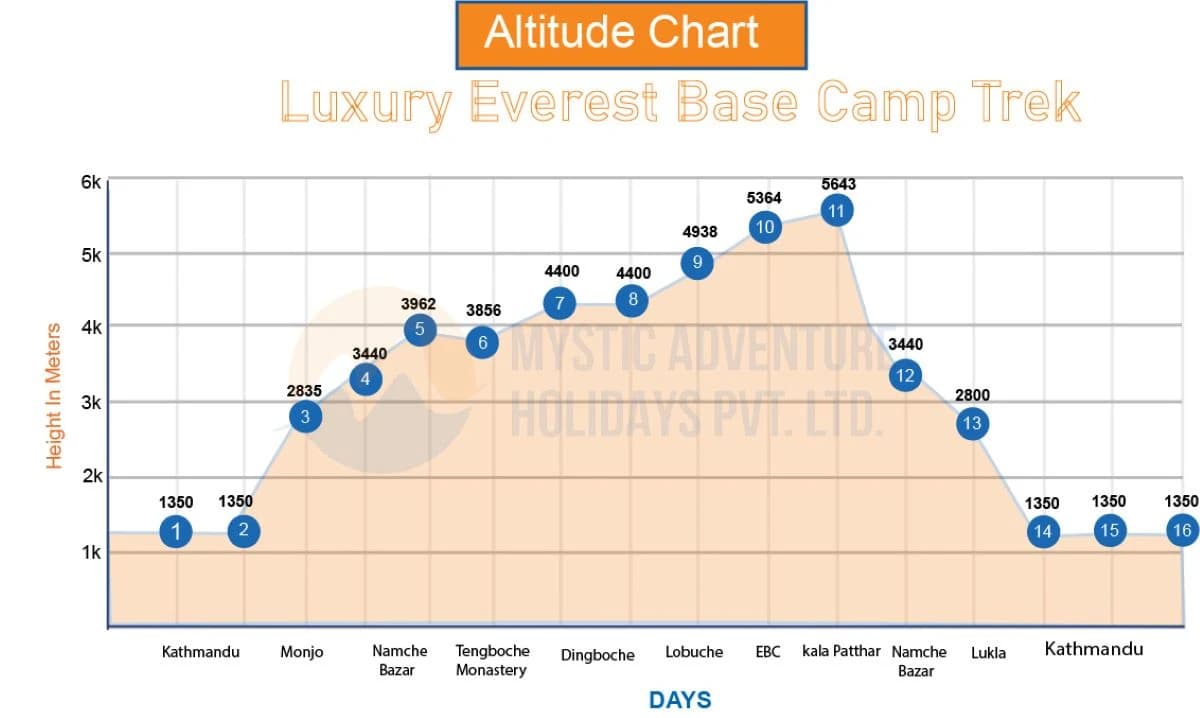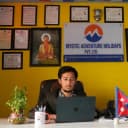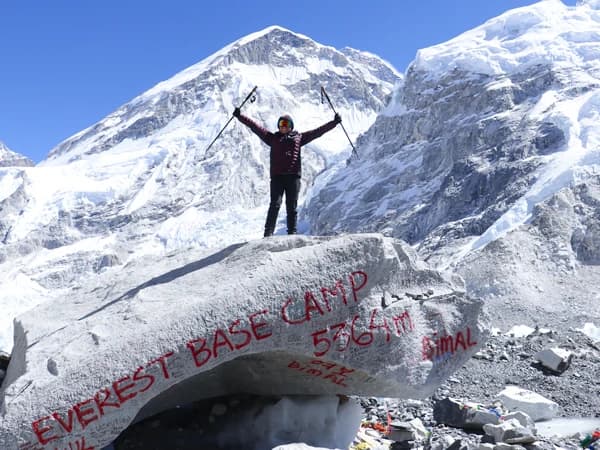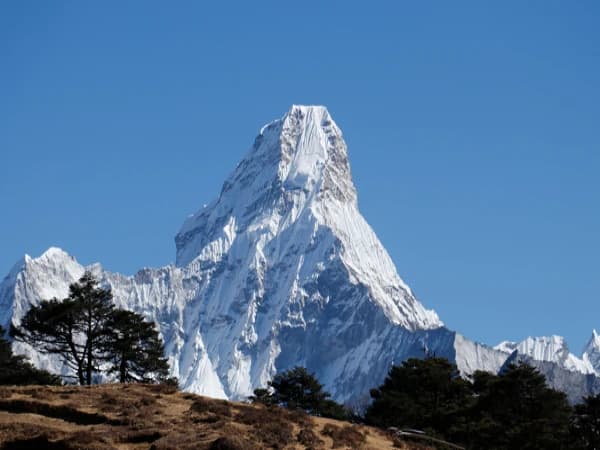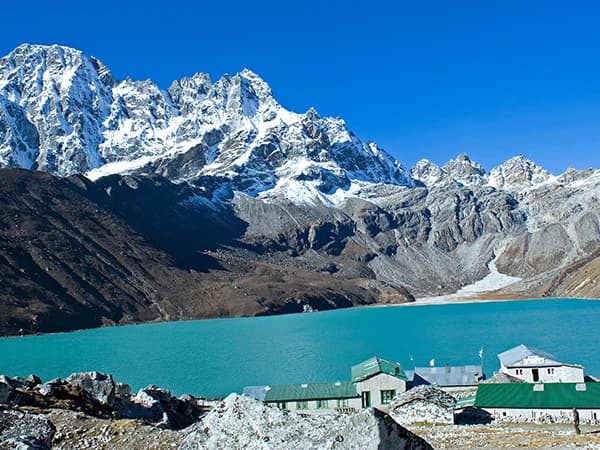Difficulty level of luxury trek
The difficulty level of the 12 days premium Everest base camp trek 2025 is graded as moderate. While the trek is designed to provide more comfortable accommodations, the physical demands still remain substantial.
The highest altitude that you will trek is 5,555 meters. You will be trekking 71 kilometers in 7 days, with average walking hours up to 6-7 hours per day.
The Everest Base Camp Trek route goes through a mix of flat sections, gradual ascents, and steep climbs over rocky paths and glacial moraines. To be able to face these challenges, you have to be physically fit and must possess good stamina.
Best time to go for Luxury trek
To make your trek the best luxury Everest base camp trek with helicopter return, you need to choose the best time to go. The best time for the trek is during March to May and September to early December.
During the months of March, April, and May, the weather conditions are stable, with less rainfall and slightly colder temperatures at higher elevations. The flowers bloom during these months with clear, mesmerizing mountain views.
In addition, in September, October and November, the temperatures are pleasant and weather conditions are stable. However, during these months, the Everest base camp luxury trekking cost is high, as it is peak trekking season. You can try the winter season treks or monsoon season treks.
Travel insurance requirement for the Luxury trek
The travel insurance requirement for the luxury trek to Everest base camp is highly recommended. It helps to avoid any financial strains on your pocket and helps ensure safe and stress-free travel.
Before buying the travel insurance for the 12 days trek, you should know what a travel insurance policy must have for this trek, including high-altitude coverage up to 6,000 meters, emergency medical evacuation, coverage for trip cancellation, baggage loss, and other unforeseen circumstances, and many more.
Foods and accommodation options
As this trek is Everest luxury trekking, you will get all high-end accommodations along with national as well as international dish options. The breakfast options include toast, eggs, pancakes, porridge, and fresh fruits.
You will get to enjoy food options like dal bhat tarkari (lentil soup with rice and vegetables), momos (steamed dumplings), and various curries. There are also international dish options like pasta, pizza, pancakes, and burgers.
The accommodation options include luxury lodge rooms equipped with amenities such as hot showers, heaters, and stunning mountain views, especially designed for comfort. The extra features include Wi-Fi, charging stations, and gourmet dining options.
The toilet and shower facilities vary based on the altitude. In the lower region, you will get the Western-style toilets with attached bathrooms. The facilities, like hot showers, are included in the Everest luxury trekking cost.
At the higher altitudes, like Everest Base Camp and Kala Patthar, there are no permanent luxury lodges. You can enjoy the luxury up to Lobuche. In Everest Base Camp and Gorak Shep, you can get simple accommodation, as there is too much cold, making it hard to manage the private bathrooms and other facilities.
Telephone, internet, and electricity
The two primary mobile service providers, Ncell and Nepal Telecom (NTC), provide coverage up to Pangboche. From Dingboche and above, the cell services are not reliable.
In terms of internet access, there are wifi services available in the teahouses. The speed of the wifi depends upon the number of users. You can also use the Everest link for better connectivity and access to the internet.
The electricity facilities are available throughout the trek with different sources: hydroelectric systems or solar power. The charging facilities come with the additional Everest Base Camp luxury trek with helicopter return cost.
Weather and temperature information of the everest region
The weather conditions and temperatures can vary according to the seasons. Here is a brief breakdown of the weather conditions and temperatures around the Everest base camp area. During the Everest luxury lodge trek, it will give you general clothing ideas.
- During the spring season, the temperatures during the day range from -2°C to 15°C, while the temperatures can drop below -10°C at night. The overall weather conditions are stable, with fewer chances of rainfall.
- The monsoon/summer season comes with high temperatures and high humidity. There is frequent rainfall in the Everest region. The trails become slippery and muddy. The average daytime temperature ranges from 2°C to 18°C, while the nighttime temperature can drop below freezing.
- At the time of the autumn season, the daytime temperatures reach up to 16°C, while the nighttime temperature ranges from -6°C to -10°C. The skies become clearer after the monsoon, and weather conditions become stable again.
- The winter season brings cold temperatures in the Everest region with a high possibility of snowfall. The average ray time temperature is -5°C to 5°C. However, the nighttime temperatures plunge well below freezing.
For the real-time info, you can also use the weather forecast apps.
Flight, transportation, and luggage info 2025
When going on the Luxury EBC trek, you should be serious about flight prebookings, transportation planning, and luggage packing. Below is some useful information regarding the flight transportation and luggage for the EBC trek.
- International and Internal Flights: If you are traveling from abroad, then you will need a visa and passport. Visa on arrival is only for some countries. So, check your eligibility for the visa on arrival before booking the flight. You can carry 23 kg, including your hold baggage and hand luggage, on your international flight. If you choose to travel to Lukla via flight, then you can carry up to 15 kg for the internal flights. For the extra weight of the duffel bag or day pack, you will have to pay an extra amount of money.
- Luggage needed for the Everest luxury trek: For your trek, a duffel bag with an 80-liter capacity and a 50- to 65-liter backpack is enough for carrying essential equipment like gear and other items. Typically, the porter will carry the duffel bag while you are responsible for carrying your own backpack. You may need a small, 20–30-liter day backpack to carry your essentials during the day’s hike.
Altitude sickness issues and acclimatization strategies
Altitude sickness issues are a serious concern when going for high-altitude treks like the luxury EBC trek. Even though the Everest luxury trekking itinerary has acclimatization days, the symptoms may still appear.
The symptoms of altitude sickness are headaches, nausea, fatigue, vomiting, persistent cough, shortness of breath, confusion, loss of consciousness, and so on. To prevent these symptoms, the trekkers need to ascend slowly, stay hydrated, maintain a balanced diet, monitor their own health, and so on.
Trekking equipment and packing list suggestions
The luxury trek to Everest Base Camp itinerary is 12 days. In these days, you will travel from places having temperatures of 6°C to 22°C to places having temperatures below freezing temperatures.
So, you will need a wide range of clothes and gear for this Everest base camp luxury lodge trek. Some of the recommended gear and essentials are given below.
- Clothing like moisture-wicking t-shirts, long underwear, down jackets, fleece pants, down vests, waterproof jackets, waterproof pants, windbreakers, rain ponchos, and so on.
- Accessories like hiking boots, camp shoes, warm thermal socks, hiking socks, gaiters, wool hats, neck gaiters, broad-brimmed light inner gloves, insulated wool, sunglasses, and so on.
- Trekking gear like a duffle bag (90L or more), a daypack (40L), a sleeping bag, water bottles or hydration bladders (2L recommended), trekking poles, a headlamp with extra batteries, and more.
- Personal items like biodegradable soap and shampoo, toothbrush/paste, deodorant, toilet paper (carry a small supply), moisturizer, lip balm, and more.
- Health and safety items like a first aid kit including blister treatments, Tylenol/ibuprofen, and Diamox; water purification tablets or lightweight water filters; etc.
- Food & snacks like protein bars, nuts, dried fruits, etc.
- Important documents like passport and visa copies, cash in local currency ($500 recommended minimum), and more.
- Optional luxuries like a travel pillow or pillowcase, a quick-drying trekking towel, a camera with extra batteries and memory cards, a portable charger and adapter, and so on.
Customized itineraries and trip extensions for the 2025 season
A premium Everest base camp trek itinerary can be customized, and trips can be extended further based on your preferences and fitness level. The customization of the trek itinerary means extra days for acclimatization days, side trips to nearby landmarks, and so on. Some of the customized packages are:
- Luxury Everest Base Camp trek with helicopter return, 11 days
- EBC trek with helicopter return
- Private Everest base camp trek
- Everest Base Camp Helicopter Tour
- Everest Base Camp Luxury Trek 14 Days
The trip extensions include visiting the nearby villages, monasteries, or viewpoints, or even extending your trek to include other destinations. As a mystic adventure representative, we will organize, customize, and extend your trekking journey through the Himalayas.
Tips to make 12 days journey smooth
- Obtain necessary permits and plan your itinerary with an experienced guide’s guidance.
- Double-check all the gear and clothing before embarking on the trek.
- Do physical fitness exercises prior to the trek.
- Choose the best time for the trekking based on your preference level and fitness level.
- Be aware of altitude sickness symptoms.
- Pack your bag wisely while including all the essential items in it.
- Stay hydrated and nourished throughout the trek.
- Hire a knowledgeable local guide or join a guided group.
- Take breaks for photography and enjoy meals at cozy tea houses or luxury lodges.
- Follow the planned paths and itineraries to avoid unnecessary troubles.
- Be flexible with your schedule to accommodate unexpected changes or personal conditions.
- Always respect local customs and traditions as you interact with sherpas and local customs.
- Use a local SIM card for calls and Everest Link for the better internet facility.
If you want to fly the drones in this region, you will need a drone permit. Learn more about the drone laws in Nepal from the link.

